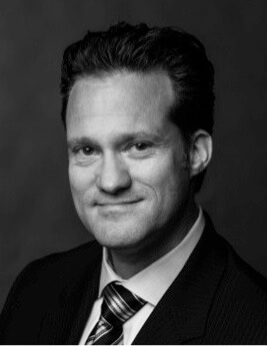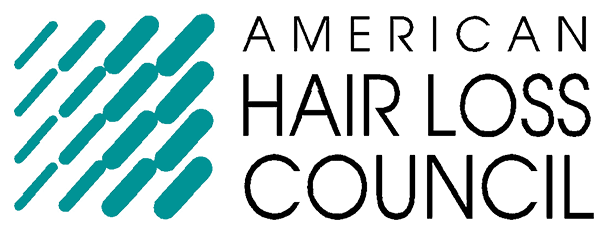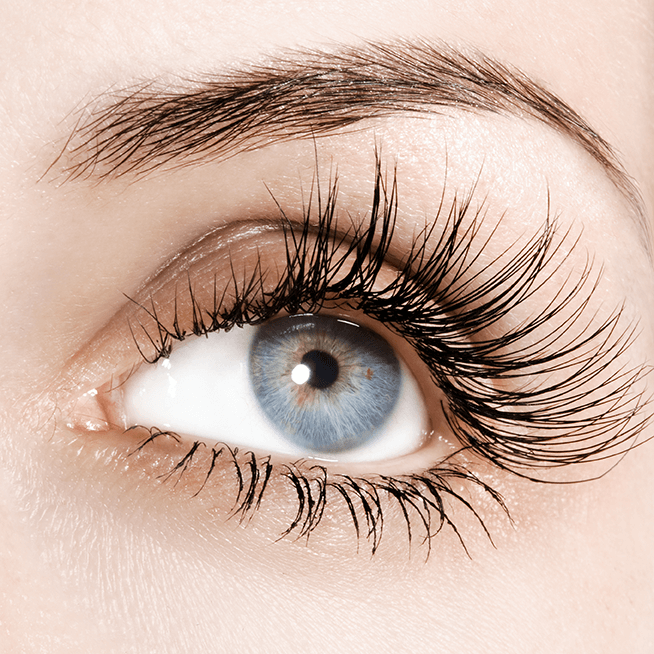Dr. Alan J. Bauman on Dateline NBC’s “Follicle Five” Hair Growth Challenge
BELOW: Watch All Episodes of Dateline’s Hair Growth Challenge!
- Dateline Year-Long Investigation Into Hair Loss Therapy
- Hair Growth Treatments
- Hair Growth Treatments (con’t)
- Hair Transplant & Other Treatments 6-Month Results
- FINAL Results Hair Growth Challenge 12-month Reveal
DATELINE NBC’s “FOLLICLE FIVE” TRANSCRIPT

The “Follicle Five” battle against baldness
DatelineNBC follows five men on different hair treatments
By Rob Stafford
Official Transcript / Dateline NBC
Updated: 6:16 p.m. ET Nov. 26, 2004
They are Dateline’s version of the ‘”Fab Five,” five proud men at the pinnacle of their lives — and life is good, except for one thing. They’re all losing their hair.For men, going bald or having thinning hair can be an extremely emotional issue, bringing on feelings of lost virility, attractiveness, sexiness or simply getting old. But now our guys are going to try to get control of their ever-widening bald spots and ever-thinning hair.The five, all friends from the Miami area, have agreed to participate in an experiment for Dateline. For 12 months, they’re each going to try a different drug, medical procedure or one of those products you’ve seen advertised on late night TV or the Internet.We’ll follow them over the next year to see how well these products and procedures work on these volunteers.
Our five men range in age from their 30s to our oldest volunteer, who is 54.
Joe Fernandez is an economics teacher at Miami Beach High School. He loves teaching, but he’s also been the target of student’s cutting remarks about his hair. Now he hopes growing back some hair will end the jokes and continue a personal transformation. Through vigorous weight training and diet, Joe lost over 100 pounds. This tough Vietnam vet now feels liberated enough to care about the way he looks. And that’s important, because he has two young daughters from his second marriage, and he’s tired of people mistaking him for their grandfather.
Paul Silva, 38, is a life long resident of Florida, the land of swimming pools. Paul, who works in real estate- has a huge collection of hats, all the better to keep his head covered practically all the time. His wife, Linda, wishes he wasn’t so obsessed with his hair, and would believe he’s attractive. He also doesn’t believe in being photographed. It’s been 10 years since he’s taken any photographs with his family. But Paul hopes that will soon change and someday he’ll be able to relive his teenage years, when he had hair almost as long as the singers in his then favorite rock group, “Quiet Riot.”
Hector Romero is also 38, married with two children, and he works for IBM in computer tech support. His job requires taking a lot of training classes, but his learning often takes a back seat to his hair. He would try to sit in the back of the class or the back of elevators so he doesn’t have to worry about people at his balding head. And he hopes his wife will be understanding about his taking on this Dateline hair challenge.
Our last two volunteers are brothers and identical twins. Richard and George Suero have more in common than their looks. At 43 years old, they both work for Eli Lilly as pharmaceutical salesmen and drive the same type of car. They’ve been close their entire lives, including their days at Georgia Tech when they were gymnastic teammates and had full heads of hair. But old photos only serve as stark reminders of what used to be. George is married with two kids. Richard is divorced. And once again, he’s on the dating scene, which only compounds his hair stress, especially since he lives in Miami, a city with a reputation for sexy women and men in top shape and usually with full heads of hair. It makes Richard feel he’s at a disadvantage.
What causes some men to have more hair and others less? It’s genetics, experts say in most cases — sensitivity to the hormone DHT is the culprit. This byproduct of testosterone interacts with hair follicles, causing them to shrink. The hair then thins and can fall out. Eventually follicles can stop growing hair completely.
It’s a problem that affects all races, men and women. The American Academyof Dermatology estimates that nearly 40 percent of both men and women have visible signs of hair loss by age 40. Yet, most people fall prey to myths about what causes them to lose their hair, like always wearing a hat.
Dr. Alan Bauman: “Totally untrue. There is no way that a hat is going to cause you to lose hair.”
Dr. Alan Bauman of Boca Raton, Fla., is a hair transplant surgeon. He says a favorite myth blames baldness on genes inherited from the mother’s father.
Dr. Bauman: “That the hair loss comes from the mother’s side of the family. And that’s probably an old husband’s tale. Not true. We see that it’s genetics and it comes from both sides of the family.”
And along with those many myths, there are plenty of wacky ideas on how to grow hair. Our five have heard about some outlandish cures too.
Paul: “I was told have a cow lick your head.”
Stafford: “Have you tried it?”
Paul: “No, it’s crossed my mind.”
Richard: “They told me to put pantyhose on your head. Okay imagine that. Tie it on your head when you go to sleep at night so that. It slips off the pillow, and you’re not causing the friction to cause the hair pull.”
Stafford: “You put pantyhose on your head?”
Richard: “Pantyhose on my — go to bed. I knotted it right up. Obviously I was very desperate at this point. Nothing worked.”
And at perhaps Paul’s most desperate point, he took some unsolicited advice from a stranger at a shopping mall.
Paul: “And he said, you know what you need to do is, you need to buy a horse hair brush and brush your hair, and I’m like, excuse me. What do you mean? What are you talking about? He goes, for the bald spot.”
Stafford: “This is a stranger.”
Paul: “Yeah.”
Stafford: “So did you buy it?”
Paul: “Yes I did. I don’t think two days passed by. And now I own a wooden hair brush. I will confess, I was there every night, 200 this way and 100 that way. I didn’t see any result from it, no.”
But what kind of results will our volunteers see when they each try a different approach to growing hair, using drugs like Propecia and Minoxidil, a laser device, or a hair transplant? Our volunteers are on a quest to get back at least some of what they’ve lost over the years. They’re hoping this will be the last day they see their hair and self-esteem go down the drain. For the next year, we’ll follow our “follicle five” to see what happens as they each try a different hair growing drug, product or medical procedure.
But before they begin this Dateline project, we have them examined by Dr. Paolo Romanelli, a professor with the University of Miami’s Dermatology Department. He takes photographs and notes- to estimate how much hair each man currently has on his head. He’ll later give his opinion on whether any of the purported hair growing products and procedures actually worked on our volunteers.
But first our volunteers receive their weapons in this battle against hair loss. Richard, our twin who is single, will be taking one of the only two FDA approved drugs to grow new hair, Finasteride, popularly known as Propecia.
Richard: “I expect it’s going to work well. Actually, I have a friend that tried it and it seems to have worked fairly well for him.”
Stafford: “On a scale of one to 10, 10 being the most optimistic, zero being the least, how optimistic are you that you’re going to grow some more hair?”
Richard: “I would say eight.”
The prescription pill is designed to block production of DHT, the hormone that causes most hair loss. It costs about $50 for a 30 day supply, or $600 a year. And in its promotional material, Propecia’s manufacturer says people like Richard have a good chance of seeing new visible hair growth.
Next, Joe, our 54 year old teacher, will be using a double punch approach, taking two drugs at the same time. It’s a technique some doctors believe increases the chances of growing new hair. Like Richard, he’s taking Propecia, but he’s also using the only other F-D-A approved hair growing drug, Minoxidil lotion.
Sold over-the-counter, he’ll be using the extra-strength version which costs about $25 for a one month supply. The total cost for the two drugs will run about $900 a year. Scientists aren’t completely sure why Minoxidil works, but believe it stimulates hair follicles to create new growth.
But like most drugs, there is a small chance of side effects. The most common with Minoxidil is inflammation and itchiness to the scalp. Propecia’s side effects include possible decreased sex drive. But Joe’s wife, Susana, supports his efforts to grow new hair.
Hector, our computer support technician, will be using an alternative nutritional product from Finland. Viviscal is the type of product you often see advertised on the Internet, complete with dramatic before and after photos, testimonials from people who say it grows hair, and scientific studies that the company says prove it works. Viviscal is mostly made from minerals and fish extracts and Hector will take one tablet twice a day. It costs about $55 a month or $660 a year. Hector is wary. He says he doesn’t want to be disappointed.
George, our twin who is married, will be using something totally different from everyone else, a device called the laser comb. Advertised in newspapers and the Internet, the product emits an actual low-level laser beam that the company says safely stimulates hair follicles. We paid $700 for the special comb and, according to the instructions, users are to slowly pass the device over their scalp. It’s recommended to use the laser comb for a minimum of five minutes, three times a day for the first four weeks. The company can’t claim the device grows hair without FDA approval, which the company says it’s trying to get. Still, in its promotional material, the manufacturer says the comb makes hair thicker and fuller, and that 90 percent of their customers are satisfied with their results. George says he has reason to believe it will work. He says he has a friend who tried it and that he’s seen a difference.
Our last volunteer, Paul, who hopes to once again flip his hair like a rock star, is about to undergo the most intrusive treatment: a hair transplant. And he is thrilled. And Dateline is paying for the procedure, as we did for all of the treatments. Still, many people might have second thoughts about a transplant because of images of rows of hair plugs implanted into a scalp that often looked strange, what some call the plastic doll-head look. But Dr. Alan Bauman, a hair transplant surgeon, says medical advances have eliminated that plug look from years ago.
Dr. Alan Bauman: “Today’s hair transplants are 100 percent undetectable. There may be people that you know who have had hair transplantation, and you are unable to tell.”
But to get that look takes a lot of money and man hours. Plus, there are risks — as Paul quickly realizes when he arrives at Dr. Bauman’s office for his operation. They include scarring, transient swelling, bruising, hair growth failure, pain and discomfort. But he wanted to go through with it. After taking medication to relax, Paul jokes about the strange-looking laser hood that’s used to stimulate his scalp. And then Paul gets a final consultation.
Stafford: “A year from now, 10 months from now, what will his scalp look like?”
Dr. Bauman: “Well, he is going to have a brand new hairline, so it’s going to be a lot lower, a more youthful position. And he’s going to have a hell of a lot more coverage all through the top front area.”
Dr. Bauman marks with a pencil where he plans to implant the new hair. As Paul enters the operating room, he’ll need to get comfortable because he won’t leave for seven hours. The donor hair comes from the back of his head because it is genetically immune to that hair loss hormone DHT, erasing the worry that it will fall out like Paul’s old hair.
After numbing his head, the doctor removes a small section of his scalp. Technicians then cut out individual hairs from that donor scalp. Paul remains relaxed the entire time.
Paul: “It kind of sounds like a scratching noise, no pain. And a little pressure. But, I mean not even close to what I thought I would be feeling.”
Then, the doctor and his team replant about 1900 individual hair follicles. Seven hours later, the process is complete. This procedure cost about $10,000. And Dr. Bauman has instructed Paul to start using Propecia and Minoxidil to help keep his old hair from falling out. But for now, he’s only thinking about new hair growing in.
But will Paul’s transplants take and will this fulfill his dream of getting back the kind of hair he once had? Will any of our men see the results they’re hoping for? We check back six months later with each of our “Follicle Five” to see who is growing new hair and who is not. You may be surprised by the results.
Part 2: Six months later, what are the results?
By Rob Stafford
Dateline NBC
Updated: 6:16 p.m. ET Nov. 26, 2004
It’s been almost six months since we last saw our “follicle five.” Each of our volunteers is trying a different hair growing treatment. And we’ve sent them back to Dr. Paolo Romanelli, a professor with the University of Miami’s Dermatology Department. The doctor took photos of each of our volunteers at the start of this project and is now taking similar shots. We’ll be comparing those before and after pictures and hear Dr. Romanelli’s subjective opinion on who has and has not grown new hair.
But first, we sat down with our five guys to hear what they think.
Joe, our oldest volunteer at 54, is disappointed. He grades his progress at a D-minus, saying he doesn’t see any difference. Joe is taking a double-punch approach. Using both of the only two FDA approved drugs for hair growth, Propecia and Minoxidil. But where Joe doesn’t see a difference, Dr. Romanelli sees some minor changes.
Dr. Romanelli: “I like to say mild to moderate growth. Some results, but not spectacular.”
That’s enough of an incentive to keep Joe trying the drugs for another six months. The manufacturer of Minoxidil says its product is most “appropriate” for men who have “gradual hair loss on the top of their scalp” and not for “frontal baldness.” Also experts say it will take about a year before our volunteers will truly know if their treatment is a success or a failure.
George, our twin who is married, says he regularly uses his laser comb. It’s a $700 device that emits a low level laser that is supposed to stimulate the scalp. He says he has noticed a difference. Dr. Romanelli, who did not know what each of our volunteers was using, feels George had good results.
Dr. Romanelli: “I think had some substantial results. I see some new follicles. New hair follicles in the crown. I think the results were very encouraging.”
As for Richard, our single twin –
Dr. Romanelli: “Richard, moderate growth. Some good results, especially around on the bi-temporal areas.”
Hector, our computer support technician is taking Viviscal, the fish-based product imported from Finland. He had said his expectations were low.
Dr. Romanelli: “Hector, unfortunately, is the most disappointing one. On the bi-temporal area -I don’t see any growth.”
Still, Hector feels he has had some success, because his hair has stopped falling out. It also has stopped drying out.
Stafford: “Hector, it’s $600 a year for Viviscal.”
Hector: “Yeah, I think it’s worth it. If it helps you maintain what you have, I think it’s definitely worth it.”
The company that makes Viviscal says people who are in the early stages of hair loss “likely benefit most” from using their product. Hector has been losing his hair for more than 10 years. But when it came to growing hair, there was unanimous agreement about our last volunteer. But Paul was not feeling confident two weeks after he had his $10,000 hair transplant. Back then, he was in a panic. His scalp was traumatized right after the surgery and he actually lost some of his existing hair. Paul’s doctor, however, reassured him that it’s not unusual to lose hair right after a transplant. But what’s happened since then? He’s thrilled with his new growth.
Dr. Romanelli: “Paul, I definitely see substantial growth in the bi-temporal areas. In the two temples.”
Paul, who hasn’t taken a family photo in years, is changing. He’s become friends again with the mirror — and something else. He now has a brush.
So far, Dr. Romanelli says he’s seen minimal to substantial growth in 4 out of 5 of our men. We’re going to check back in another six months to see how they’re all doing after one full year. It’s important to remember our Dateline hair project is an unscientific exercise. Your results may be different and you should consult your doctor before starting any of these treatments.
And while Paul already feels transformed, there’s another big change coming for his family this holiday season. It had been 10 years since he’d taken a Christmas picture with his family.
12-month Results / Dateline NBC Hair Growth



 Dr. Alan J. Bauman, M.D.Hair Loss & Hair Transplant ExpertBoca Raton, FL
Dr. Alan J. Bauman, M.D.Hair Loss & Hair Transplant ExpertBoca Raton, FL







